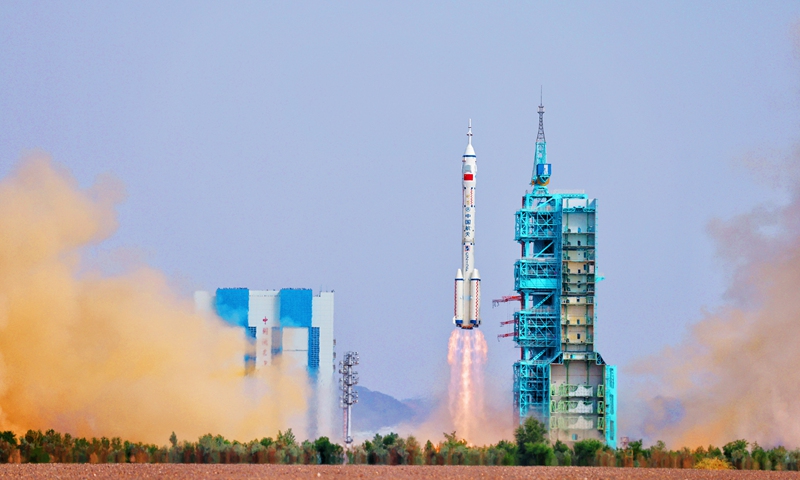
Photo: Zhang Jingyi
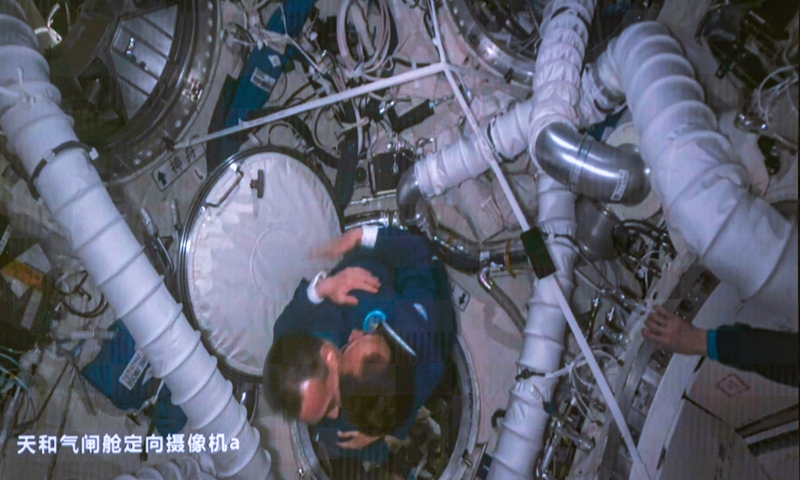
Photo: courtesy of the CMSA
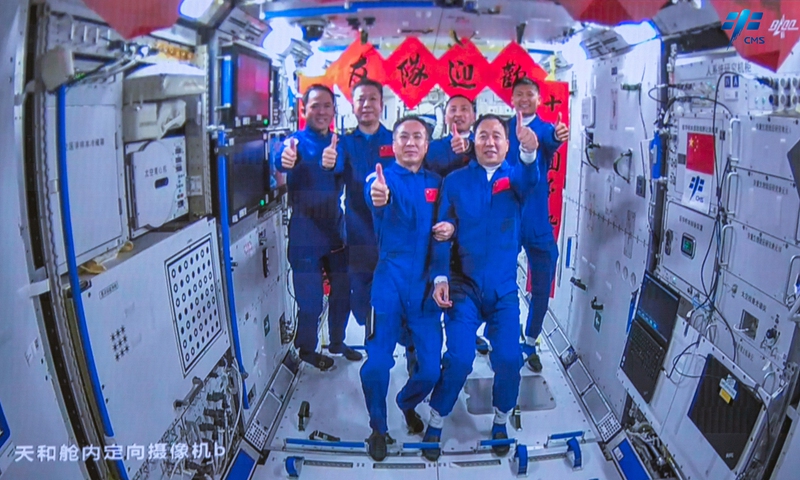
Photo: courtesy of the CMSA
The China Space Station staged its first "heavenly reunion" of six taikonauts on Tuesday evening after it entered the application and development phase at the end of 2022. Led by mission commander and veteran taikonaut Jing Haipeng, the incoming Shenzhou-16 trio entered the space station at 6:22 pm on Tuesday where they received warm embraces from their Shenzhou-15 brothers.
The historic moment marked the beginning of China's second in-orbit direct handover between two Shenzhou crews, following the first one between the Shenzhou-15 and Shenzhou-14 crew in November 2022.
Shenzhou-15 mission commander Fei Junlong and his fellow crew members Deng Qingming and Zhang Lu, who are famous for their great skills and passion for Chinese calligraphy, decorated the Tianhe core module with red and joyful couplets for the welcome party. The six taikonauts exchanged hugs and firm handshakes before they have a group picture taken to celebrate the reunion in space.
Next, the crew of the two missions will carry out an in-orbit handover and will live together in the space station for about five days before the Shenzhou-15 returns to Earth, according to the China Manned Space Agency (CMSA).
Currently, a total of 17 astronauts are in orbit:six taikonauts from China, five NASA astronauts from the US, three cosmonauts from Russia, two from Saudi Arabia and one from the UAE.
Marking the first manned space mission after China's space station entered its application and development phase, the Shenzhou-16 spacecraft carrying three taikonauts was successfully launched onboard a Long March-2F carrier rocket at 9:31 am on Tuesday from the Jiuquan Satellite Launch Center located in Northwest China.
After a flight of around 10 minutes, the Shenzhou-16 spacecraft successfully separated from the launch vehicle and entered its preset orbit, with the crew members in good condition, according to a statement the CMSA sent to the Global Times, announcing the success of the launch mission.
At 4:29 pm on Tuesday, some six and a half hours after launch, the Shenzhou-16 spacecraft docked with the Tianhe core module's radial port, announced the CMSA.
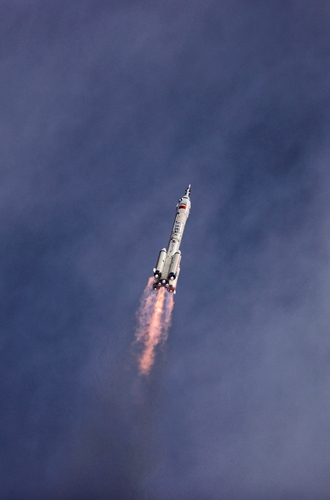
Photo: Zhang Jingyi
First civilian taikonautFor the team lineup, the Shenzhou-16 includes a payload expert, Gui Haichao, along with flight engineer Zhu Yangzhu - two first-timers in a crew that will be led by veteran taikonaut Jing Haipeng, whose trip marks his fourth time in space.
All three crew members hold a doctorate degree and are members of the Communist Party of China.
It is the first time Chin has sent a civilian taikonaut to space. Gui, the 36-year-old bespectacled payload specialist, has attracted the most public attention, as he has inspired millions of space dreamers in China and abroad. He will be responsible for managing and operating scientific research and experimental projects in the space station, focusing mainly on the management and operation of payloads.
Zhu the flight engineer will be responsible for routine maintenance and repair of the space station and technical tests and experiments.
During their mission, the Shenzhou-16 crew will continue to conduct extravehicular activities and cargo airlock extravehicular tasks, space science experiments, and the trial of new technologies. The mission will include platform management, taikonaut support system tests, and science education activities, the Global Times learned from China Aerospace Science and Technology Corporation (CASC).
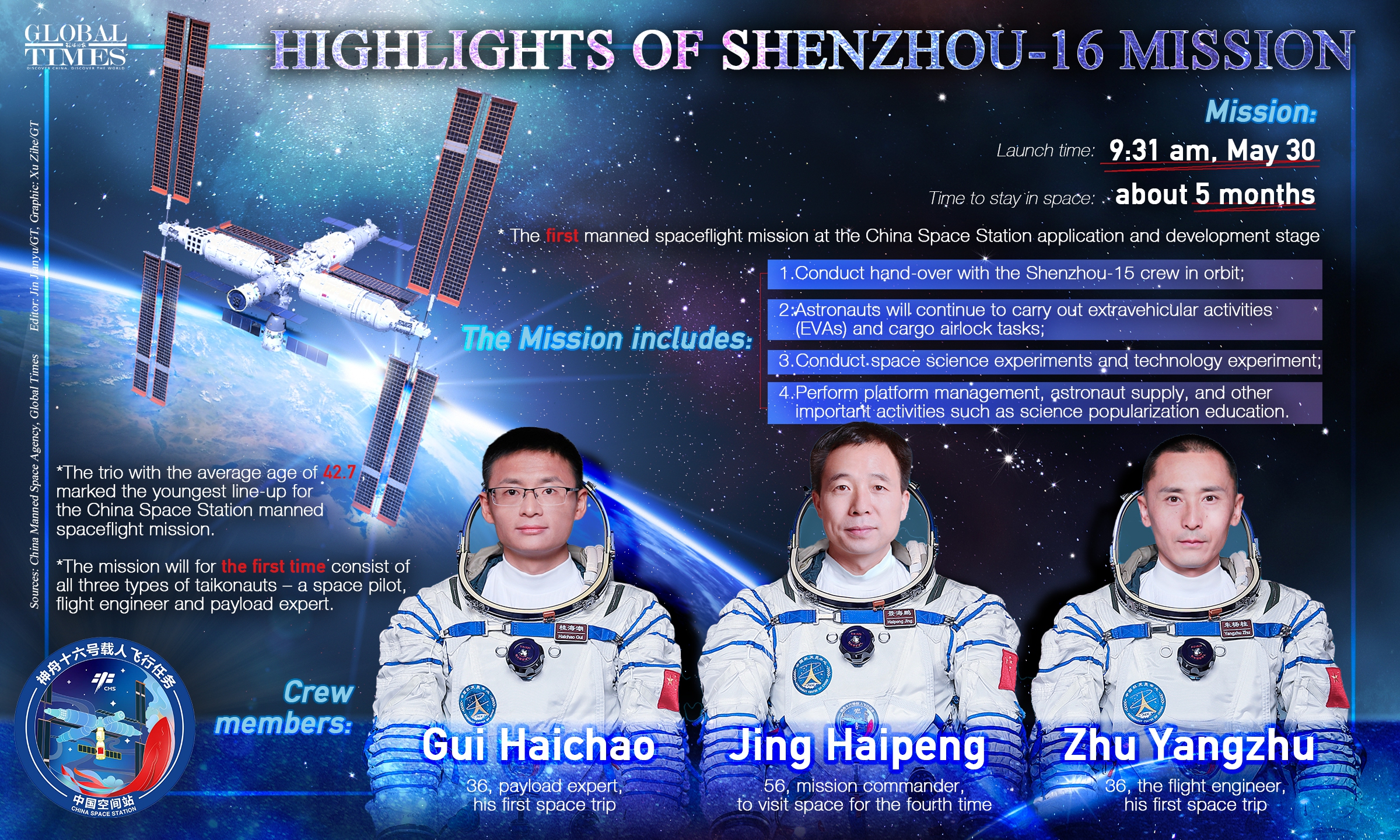
Highlights of Shenzhou-16 Mission
Challenging docking maneuver This is the first manned space mission in the space station's application and development phase, and the first radial rendezvous and docking performed under the T-structure formed by the three modules.
Compared with previous radial docking practices executed by the Shenzhou-13 and Shenzhou-14 spacecraft during the construction stage of the space station, the maneuver this time represented a more complex challenge, given the larger combination mass and size, and more intricate aerodynamic effects, the CASC revealed.
Specifically, with the successive joining of more modules and spacecraft including the extra-large Wentian and Mengtian lab modules, as well as manned and cargo spaceships, the space station's size, mass, inertia, and center of gravity have changed significantly, impacting the attitude control of docking vehicles, with some parameters even increasing by orders of magnitude.
Previously when the Shenzhou-14 manned spacecraft docked radially with the space station, it weighed only 47 tons. Now, the Shenzhou-16 has faced a 90-ton space station complex with crew onboard.
To cope with the challenge, the Shenzhou-16 has used a relative attitude and position control manner, especially for close-range docking. The changes in motion characteristics of the space station also directly affected the spacecraft's rendezvous and docking control process.
The 'golden rocket'As for the launch vehicle, deputy chief designer of the Long March-2F carrier rocket Liu Feng told the Global Times that they have made over 20 technical adjustments to improve rocket performance.
The development team has focused on improving redundancy and equipment advancement to continuously enhance the reliability of the rocket, Liu said, noting that the team has promoted the localization of various electrical system components on the rocket so as to further improve the level of independent control of the product.
The team used digital and information technology to empower the rocket and introduced "intelligence" into data interpretation.
With the construction of a remote measurement and launch support system, developers have achieved real-time communication of test data for the Long March-2F rocket, so that ground control personnel can more easily and comprehensively receive relevant data from the rocket, and carry out real-time monitoring and analysis while displaying it on the shared screen simultaneously.
According to CMSA spokesperson Lin Xiqiang, the Shenzhou-15 crew has so far stayed and worked in orbit for 182 days, during which they have successfully carried out four extravehicular activities (EVAs), which set a new record with most space walking missions executed for a single crew.
Moreover, the Shenzhou-15 trio have achieved multiple payload tasks outside the space station cabin, human factors engineering technology research, 28 aerospace medical experiments, and 38 space science trials covering life ecology, material science and fluid mechanics among others, through which they have obtained valuable experimental data, Lin said.
Before returning to Earth, the Shenzhou-15 crew will carry on with their space science experiments in orbit, complete the collection and disposal of experimental samples and check the items that will return to Earth in their capsule.
It takes around six months for those who serve on long-term spaceflight missions to see a return to their normal physical condition, before they resume training and participate in another round of space flight candidate selection.
It will take about one to one and a half years for such candidates to be able to execute another space mission, Lin explained, noting that he believes we could soon see the crew again in space in subsequent missions.








